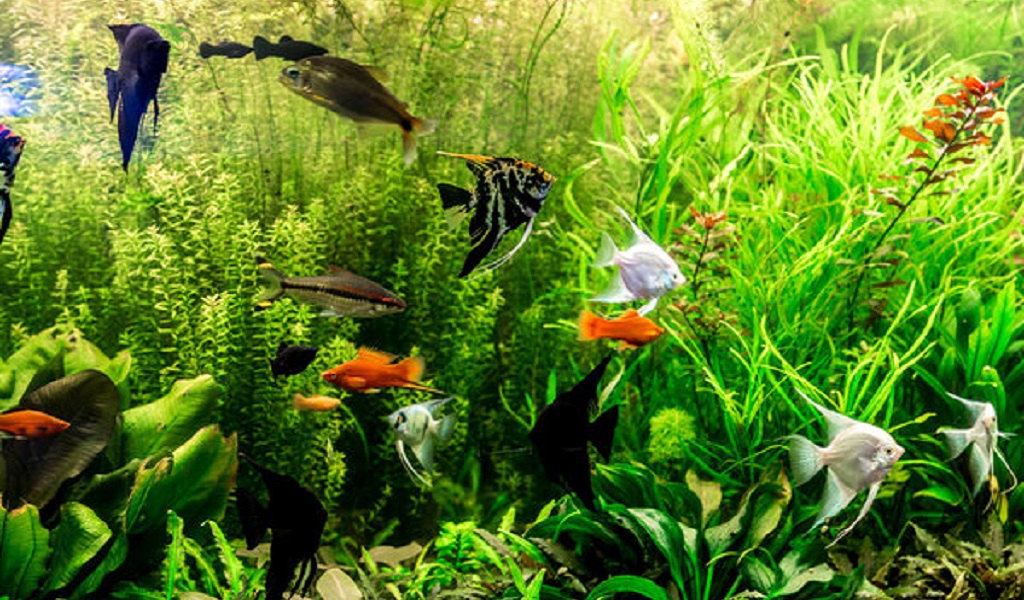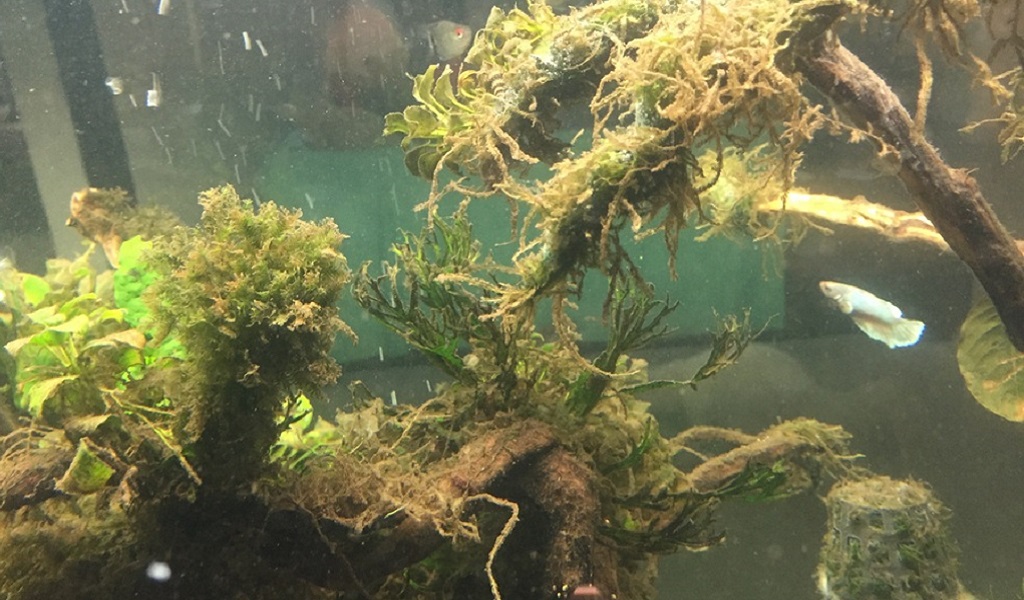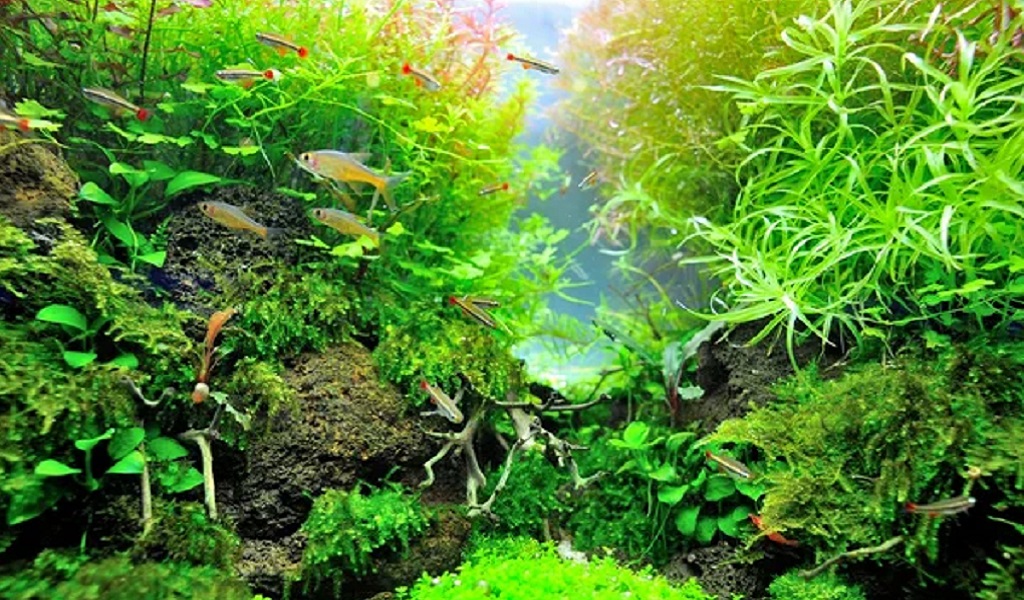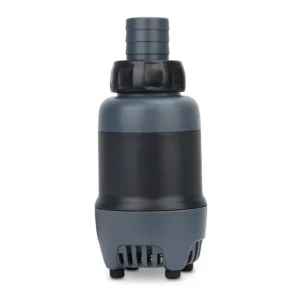CO2 is not typically necessary in a fish-only tank, as the fish waste will provide sufficient levels of CO2 for plant growth. In a planted tank with fish, however, additional CO2 may be needed to support the plants.
Content Table

Does a Planted Tank Require CO2?
Brief Answer:
If you have a planted tank with fish, you may need to supplement the CO2 levels if your plants are not growing well. Adding CO2 to a planted tank can certainly help to improve the health and growth of your plants.
There are a few different ways to inject CO2 into your aquarium. Regardless of which method you choose, be sure to monitor the levels of dissolved CO2 in your aquarium water, so that it does not get too high and harm your fish!
How to Tell If Your Planted Tank Lacks CO2?
If your planted tank is lacking CO2, there are a few things you can look for to tell.
1. Lack of growth
The first is the overall health of your plants. If they are struggling to grow or are looking unhealthy, it could be a sign that they are not getting enough CO2.
2. Checking CO2 levels
You can test the water in the tank for dissolved CO2 levels using a simple kit from an online retailer. If the levels are low, then it is likely that your plants are not getting enough CO2 and you will need to take steps to correct the issue.

Pros Of Adding CO2 to the Tank with Fish
1. Increased rate of Photosynthesis
One of the main benefits of adding CO2 to a planted tank is that it can help to increase the rate of photosynthesis. This is because CO2 is used to create glucose during photosynthesis.
2. Enhance growth for plants
By increasing the amount of CO2 available to your plants, you can help them to grow more quickly and healthily. It will also increase the concentration of oxygen in the tank and allow fish to live happily.
3. Prevent algae growth
Another benefit of adding CO2 is that it can help to prevent algae growth. Algae thrive in environments where there are high levels of dissolved oxygen and low levels of carbon dioxide. By keeping the levels of carbon dioxide in your tank at a steady level, you can help to prevent algae from taking over.
4. Enhance water clarity
CO2 can help to improve the clarity of the water in your tank. When there is more dissolved carbon dioxide in the water, it can help to make the water appear clearer. This is because carbon dioxide helps to bind with particles in the water.
5. Increase PH level
Carbon dioxide can help to lower the level of pH in your tank by increasing the amount of acidity in the water. Carbon dioxide acts as an acid in water and pH exhibits a daily cycle in a planted aquarium. When carbon dioxide concentrations are highest, pH is lowest. This can be beneficial for plants and fish that prefer a higher level of acidity in their environment.
Cons of Adding Too Much CO2 to the Fish Tank
While there are benefits to adding CO2 to a fish tank, there are also some potential drawbacks.
- One of the biggest concerns is that if too much CO2 is added to the water, it can become toxic to the fish. In addition, if the pH of the water becomes too low, it can be damaging to both the fish and their environment.
- Another potential downside is that algae can grow more quickly in tanks with higher levels of CO2. This can create more work for the aquarium owner in terms of keeping the tank clean.
- Finally, high levels of CO2 can encourage the growth of algae, which can make it more difficult to maintain a clean aquarium.
How to Add CO2 to a Planted Fish Tank?

Adding CO2 to a planted fish tank can be done in a few different ways, each with its benefits and drawbacks.
1. Pressurized gas tank
The most common way to add CO2 is by using a pressurized gas tank and a regulator with an adjustable output. This method is often considered the most effective and efficient way to add CO2, but it can be expensive and requires some maintenance.
2. DIY yeast reactor
Another popular method of adding CO2 to the tank is by using DIY yeast reactors. These are relatively simple and inexpensive to set up, but they can be less reliable than pressurized gas tanks and require more frequent attention.
3. Aerosol CO2 sets
Some people choose to forego adding CO2 entirely and instead focus on providing their plants with other nutrients that they may be lacking. While this approach does not provide the same level of support for plant growth as adding CO2, it can still be effective in keeping plants healthy.
4. CO2 injectors
CO2 injectors are an excellent option for aquariums of all sizes. They’re very easy to set up and don’t require any special equipment. You need an air pump and an air stone, and you’re good to go.
5. Microbial decomposition and fermentation
The microbial decomposition and fermentation method is suitable for aquatic plant tanks within 30cm. CO2 is produced by the decomposition of organic sugars by yeast. The CO2 produced by fermentation is limited to less demand, and a temperature above 30 ℃ can produce ideal effects, so this method is used in mini-planted aquariums.
Conclusion
In conclusion, adding CO2 to fish tanks can have both benefits and drawbacks. It is important to weigh the pros and cons before deciding whether to add CO2 to your aquarium. Moreover, we provide you with information about different methods that you can use for adding CO2. Each method has its specs and uses according to the nature of the aquarium and plant growth. Whichever route you decide to take, be sure to do some research first and always consult with a professional if you have any questions.


Leave a comment